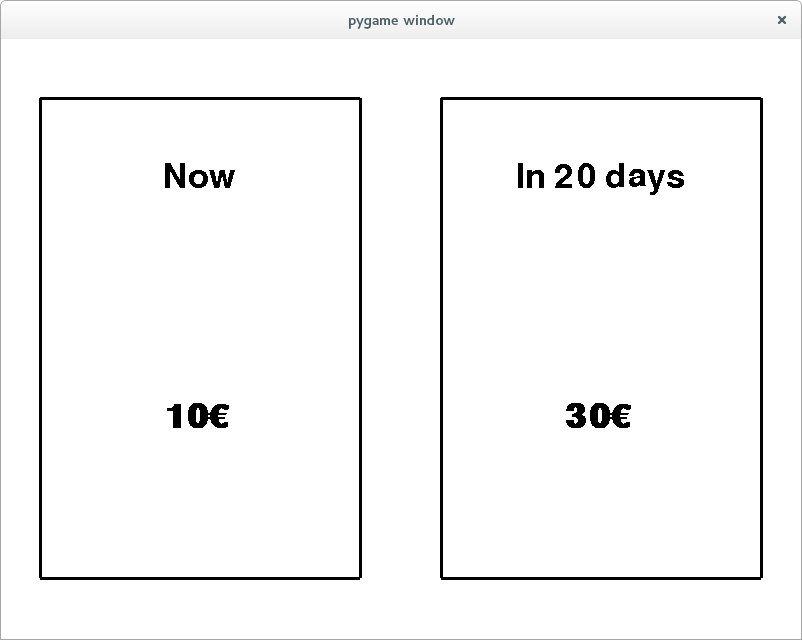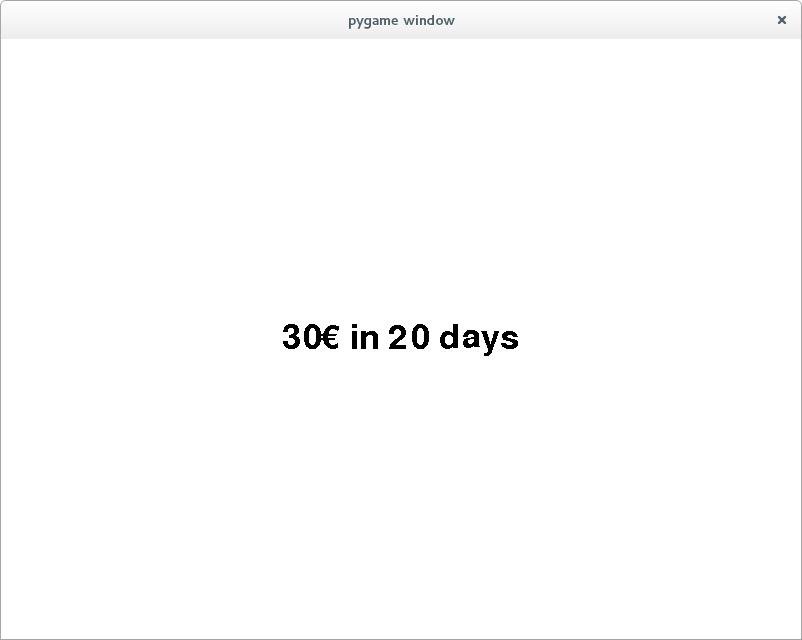Welcome to PyParadigm¶
PyParadigm is a small set of classes and functions designed to make it easy to write psychological paradigms in Python.
“Why another presentation software?” You may ask. There is already a lot of software, like E-Prime, Presentation, or Matlab. But since you are reading the documentation of a Python library, I assume you already decided to use freely available, non-commercial options. Of course there is still PsychoPy, but it was never ported to Python3.
PyParadigm takes another approach. It does not force you to use a mouse to drag and drop a paradigm together and struggle with some details that might not have been forseen by the developers. Paradigms usually are just a sequence of screens combined with some user-interaction, which will generate some data that needs to be stored afterwards. Python allows you to manipulate the screen in any thinkable way and process keyboard and mouse input arbitrarily through the great PyGame library. But while PyGame is great, it requires a lot of code to write a paradigm, mostly because it is designed to write programs that are much more complex than paradigms (i.e. video games). And this is where PyParadigm comes in. It reduces the amount of required code to a minimum. To wet your appetite, I will present a short script that implements a simple inter temporal choice task, where the subject chooses between 2 offers with the left or the right arrow-key, and gets a short feedback. The decisions, including delay and amount, will be stored in a json-file.
The screens looks like this:
Now the subject has to choose an option through a button press, in this case she/he chooses the right option.
And this is the script:
1 2 3 4 5 6 7 8 9 10 11 12 13 14 15 16 17 18 19 20 21 22 23 24 25 26 27 28 29 30 31 32 33 34 35 36 37 38 39 40 41 42 43 44 45 46 47 48 49 50 51 52 53 54 55 56 57 58 59 60 61 62 63 64 65 66 67 68 69 70 71 72 73 74 75 76 77 78 79 80 81 82 83 84 85 86 87 88 89 90 91 | import pygame
from pyparadigm.surface_composition import *
from pyparadigm.misc import empty_surface, display, init
from pyparadigm.eventlistener import EventListener
import json
import time
# Scroll to the bottom, and start reading in the main() ;)
def offer_box(title, amount):
# Creates a border around a vertical layout containing 2 cells, where the
# lower one has twice the size of the upper one (layout children are
# automatically wrapped in LLItems with relative_size=1). Both Boxes are
# filled with text, wich is centered in its parent area.
return Border()(
LinLayout("v")(
Text(title, Font(size=50)),
LLItem(2)(Text(f"{amount}€", Font(size=50, bold=True)))
)
)
def make_offer(now, later, delay):
# Create pygame.Surface with a white background.
# The LinLayout splits the available space into (in this case)
# equally sized horizontally aligned parts. 80% of the available
# space of each part is used to display a offer box.
return compose(empty_surface(0xFFFFFF), LinLayout("h"))(
Padding.from_scale(0.8)(offer_box("Now", now)),
Padding.from_scale(0.8)(offer_box(f"In {delay} days", later)),
)
def make_feedback(amount, delay):
# creates a pygame.Surface which only contains the text message
msg = f"{amount}€ " + ("now" if delay == 0 else f"in {delay} days")
return compose(empty_surface(0xFFFFFF))(Text(msg, Font(size=50)))
def main():
# initiate a window with a resolution of 800 x 600 pixels
init((800, 600))
# alternatively, to create a full screen, hardware accelrated window, you
# could use:
# init((1920, 1080), pygame.FULLSCREEN | pygame.HWSURFACE | pygame.DOUBLEBUF)
# Create an Eventlistener object
event_listener = EventListener()
# Initiate the data for the paradigm, and create 2 lists to store
# the results
immediate_offers = ([10] * 3) + ([20] * 3) + ([30] * 3)
delays = [10, 20, 30] * 3
delayed_offers = [delay + im_offer
for delay, im_offer in zip(delays, immediate_offers)]
chosen_amounts = []
chosen_delays = []
reaction_times = []
# Execute the paradigm
for im_offer, del_offer, delay in zip(immediate_offers, delayed_offers, delays):
# display the offer
display(make_offer(im_offer, del_offer, delay))
offer_onset = time.time()
# wait for a decision in form of the left or right arrow-key
key = event_listener.wait_for_keys([pygame.K_LEFT, pygame.K_RIGHT])
# calculate reaction time and save it
reaction_times.append(time.time() - offer_onset)
# store results according to decision
if key == pygame.K_LEFT:
chosen_amounts.append(im_offer)
chosen_delays.append(0)
else:
chosen_amounts.append(del_offer)
chosen_delays.append(delay)
# display a feedback for 2 seconds
display(make_feedback(chosen_amounts[-1], chosen_delays[-1]))
event_listener.wait_for_seconds(2)
# save results to a json File
with open("results.json", "w") as file:
json.dump({"amount": chosen_amounts, "delay": chosen_delays,
"reaction_times": reaction_times}, file)
if __name__ == '__main__':
main()
|
The next step now would be to read the tutorial

